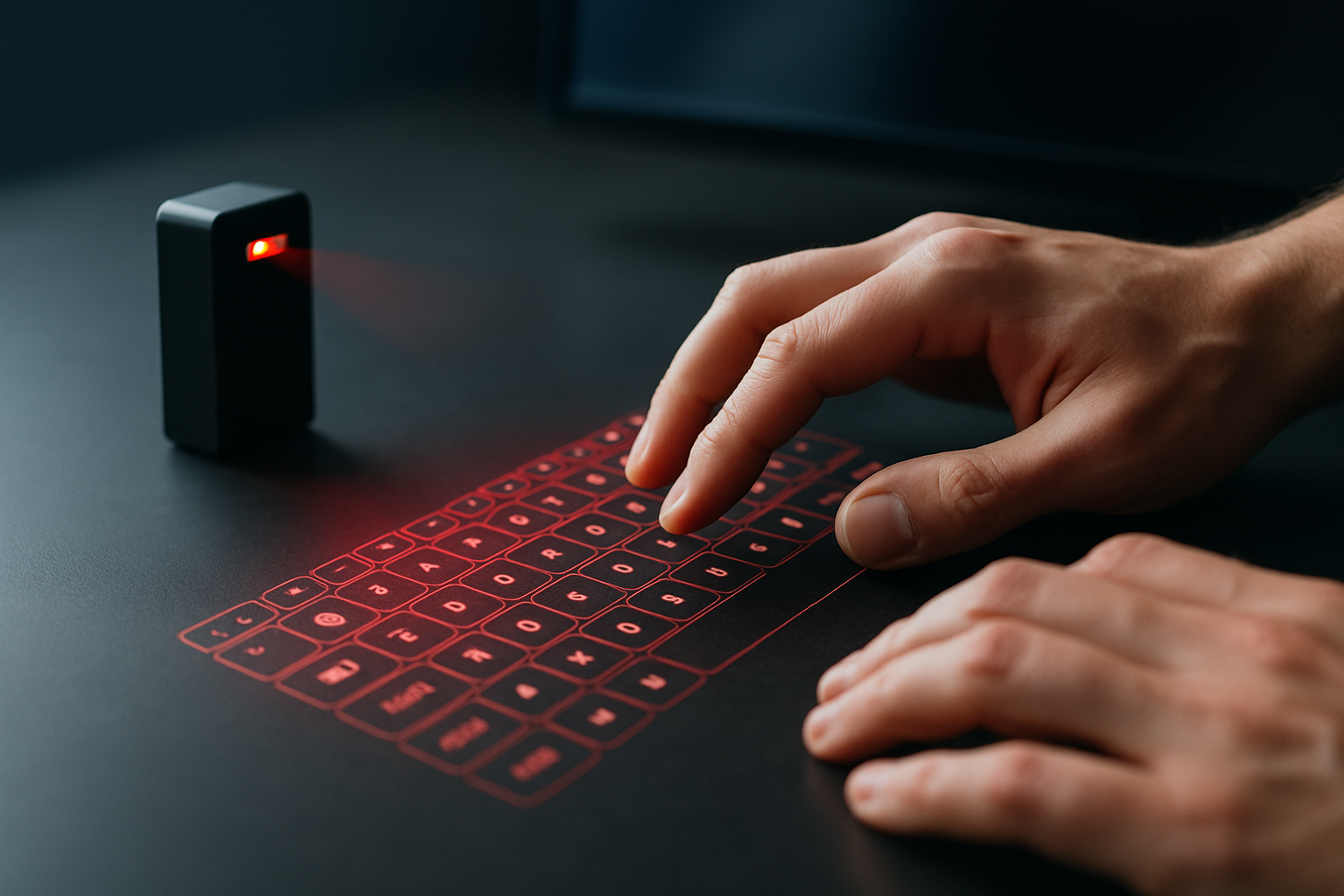Holographic Keyboards: Typing into Thin Air
In an era where technology continues to push the boundaries of what's possible, holographic keyboards are emerging as a fascinating blend of sci-fi fantasy and tangible reality. These futuristic input devices project a virtual keyboard onto any flat surface, allowing users to type without physical keys. As we delve into this cutting-edge technology, we'll explore its potential to revolutionize how we interact with our devices and the challenges it faces in becoming a mainstream input method.

These initial attempts were clunky and unreliable, often struggling with accuracy and responsiveness. However, they laid the groundwork for the more sophisticated systems we see today. As sensor technology and image processing algorithms improved, so did the viability of holographic keyboards.
How Holographic Keyboards Work
At their core, holographic keyboards rely on a combination of projection technology and motion sensing. A small projector casts an image of a keyboard onto a flat surface, while an infrared laser creates an invisible plane just above this projection. When a user’s fingers break this plane, cameras or sensors detect the movement and interpret it as a keystroke.
Modern holographic keyboards use advanced algorithms to improve accuracy and reduce false inputs. Some systems even incorporate haptic feedback, using ultrasonic waves to create the sensation of pressing physical keys. This tactile element adds a crucial dimension to the user experience, bridging the gap between virtual and physical typing.
The Advantages of Going Virtual
Holographic keyboards offer several potential advantages over their physical counterparts. Perhaps the most obvious is portability. These devices can be integrated into smartphones or small projectors, allowing users to have a full-sized keyboard wherever they go without the bulk of traditional peripherals.
Hygiene is another significant benefit, particularly in shared environments. With no physical surfaces to touch, holographic keyboards could reduce the spread of germs in public spaces like libraries or internet cafes. They’re also impervious to spills and dust, potentially increasing their longevity compared to traditional keyboards.
Customization is yet another area where holographic keyboards shine. Users can easily switch between different layouts, languages, or even custom designs with a simple software update. This flexibility could be particularly useful for multilingual users or those with specific ergonomic needs.
Current Market Offerings and Pricing
While holographic keyboards are still largely in the realm of prototypes and niche products, a few companies have brought them to market. The Celluon Epic, for example, is a portable projector that creates a virtual keyboard and touchpad. It’s compatible with most Bluetooth-enabled devices and retails for around $150.
Another player in this space is Serafim, with its Keybo device. This smartphone-sized projector not only creates a virtual keyboard but also projects a virtual piano keyboard. The Keybo is priced at approximately $270, reflecting the advanced technology packed into its compact form.
These prices put holographic keyboards in a premium category, significantly more expensive than standard wireless keyboards. However, as with most emerging technologies, prices are expected to decrease as production scales up and the technology matures.
Challenges and Limitations
Despite their futuristic appeal, holographic keyboards face several challenges that have so far limited their widespread adoption. The most significant hurdle is the lack of tactile feedback. While some systems attempt to simulate the feel of physical keys, the experience still falls short of traditional typing for many users.
Accuracy is another concern. Even with advanced motion detection, holographic keyboards can struggle to differentiate between intentional keystrokes and incidental movements, leading to typing errors. This issue is particularly pronounced in less-than-ideal lighting conditions or on uneven surfaces.
Battery life is also a consideration for portable holographic keyboard devices. The constant projection and motion sensing can drain power quickly, potentially limiting their usefulness in mobile scenarios.
The Future of Holographic Input
As technology continues to advance, we can expect to see significant improvements in holographic keyboard systems. Enhanced motion tracking, more sophisticated haptic feedback, and improved power efficiency are all likely developments in the near future.
Some experts predict that holographic keyboards could eventually be integrated into augmented reality (AR) systems. Imagine typing on a virtual keyboard that only you can see, perfectly positioned wherever you find comfortable. This convergence of holographic input and AR could redefine our concept of mobile computing.
However, for holographic keyboards to truly succeed, they’ll need to offer an experience that’s at least comparable to physical keyboards in terms of speed, accuracy, and comfort. Achieving this balance of futuristic convenience and practical usability will be key to moving this technology from a niche curiosity to a mainstream input method.
As we continue to push the boundaries of human-computer interaction, holographic keyboards represent an intriguing glimpse into a possible future—one where our digital interfaces are as fluid and adaptable as the virtual worlds they control. Whether they become the next must-have tech accessory or remain a futuristic novelty, holographic keyboards are undoubtedly a fascinating development in the ever-evolving landscape of input devices.




